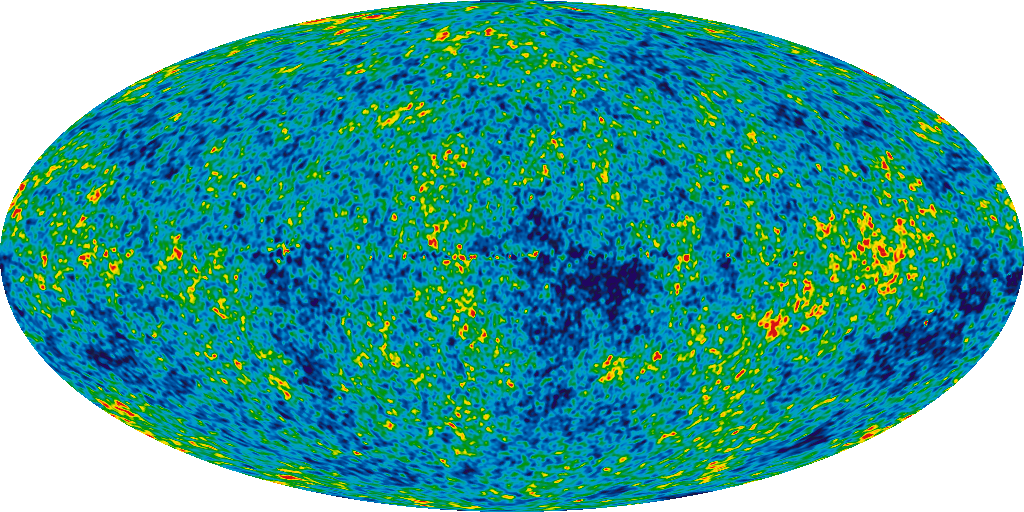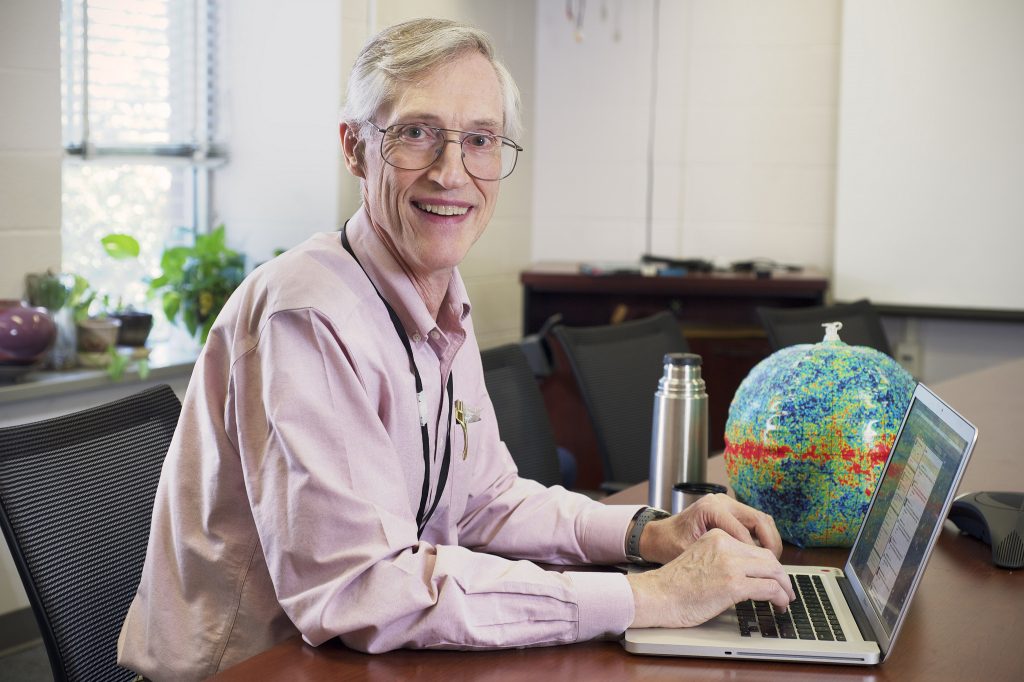The James Webb Space Telescope and the Big Bang: A Q&A with Nobel Laureate Dr. John Mather
- By Maggie Masetti
- June 29, 2016
- Comments Off on The James Webb Space Telescope and the Big Bang: A Q&A with Nobel Laureate Dr. John Mather
As the person at the other end of the James Webb Space Telescope social media, I answer a lot of questions. One big area of interest is always the Big Bang. And that’s for obvious reasons – there’s a definite fascination with the universe’s beginnings. We want to know where we came from and how we got here. But the Big Bang is also something that it’s easy to misunderstand, and there are a ton of misconceptions about it. This is partly because of the mental image a term like “Big Bang” brings to mind – that is, an explosion like a firecracker, with a central point from which everything sprang. This is actually NOT what the Big Bang was at all! In fact, did you know the universe has never had a center?
I sat down with Dr. John Mather and together we put together a short Q&A of some of the most commonly asked questions and misunderstandings about the Big Bang, and also what JWST’s role in understanding the universe’s early history. John is most qualified for answering questions like this, as someone who won a Nobel Prize (along with George Smoot) for his work using the COBE satellite to measure the heat radiation from the Big Bang – something that is the best, most overwhelming proof to date for the Big Bang Theory.
Without further ado, here’s John’s answers to a few questions about the Big Bang!
Q: What is the Big Bang?
A: The Big Bang is a really misleading name for the expanding universe that we see. We see an infinite universe expanding into itself. The name Big Bang conveys the idea of a firecracker exploding at a time and a place – with a center. The universe doesn’t have a center. The Big Bang happened everywhere at once (about 13.8 billion years ago), and was definitely not a point in space or time. We know this because 1) we see galaxies rushing away from each other, not from a central point and 2) we see the heat that was left over from early times, and that heat uniformly fills the universe.
Q: Can we see the Big Bang?
A: No, we won’t! The Big Bang itself is not something we can see.
Q: What can we see?
A: We can see the heat that was there at about 380,000 years after the expansion of the universe began 13.8 billion years ago (which is what we refer to as the Big Bang). This heat covers the entire sky and fills the universe. (In fact it still does.) We were able to map it with satellites we (NASA and ESA) built called the Cosmic Background Explorer (COBE), the Wilkinson Microwave Anisotropy Probe (WMAP), and Planck. The universe at this point was extremely smooth, with only tiny ripples in temperature.

All sky picture of the infant universe created from nine years of WMAP data. Credit: NASA/WMAP Science Team. More info.
Q: I heard the James Webb Space Telescope will see back further than ever before. What will JWST see?
A: COBE, WMAP, and Planck all saw further back than JWST, though it’s true that JWST will see farther back than Hubble. JWST was designed not to see the beginnings of the universe, but to see a period of the universe’s history that we have not seen yet before. Specifically we want to see the first objects that formed as the universe cooled down after the Big Bang. That time period is perhaps hundreds of millions of years later than the one COBE, WMAP, and Planck were built to see. We think that the tiny ripples of temperature they observed were the seeds that eventually grew into galaxies. We don’t know exactly when the universe made the first stars and galaxies – or how for that matter. That is what we are building JWST to help answer.
Q: Why can’t Hubble see the first stars and galaxies forming?
A: The only way we can see back to the time when these objects were forming is to look very far away. Hubble isn’t big enough or cold enough to see the faint heat signals of these objects that are so far away.
Q: Why do we want to see the first stars and galaxies forming?
The chemical elements of life were first produced in the first generation of stars after the Big Bang. We are here today because of them – and we want to better understand how that came to be! We have ideas, we have predictions, but we don’t know. One way or another the first stars must have influenced our own history, beginning with stirring up everything and producing the other chemical elements besides hydrogen and helium. So if we really want to know where our atoms came from, and how the little planet Earth came to be capable of supporting life, we need to measure what happened at the beginning.
Dr. John Mather is the Senior Project Scientist for the James Webb Space Telescope. Dr. Mather shares the 2006 Nobel Prize for Physics with George F. Smoot of the University of California for their work using the COBE satellite to measure the heat radiation from the Big Bang.
Edited to add: John wrote this excellent essay on misconceptions about the Big Bang, which nicely complements this piece. Read it on theedge.org.
The James Webb Space Telescope is the scientific successor to NASA’s Hubble Space Telescope. It will be the most powerful space telescope ever built. Webb will study many phases in the history of our universe, including the formation of solar systems capable of supporting life on planets similar to Earth, as well as the evolution of our own solar system. It’s targeted to launch from French Guiana aboard an Ariane 5 rocket in 2018. Webb is an international project led by NASA with its partners, ESA (European Space Agency) and the Canadian Space Agency.
For more information, go to: http://jwst.nasa.gov




